Basics of Amazon Bidding
Be the first product a customer sees by getting your ad placed on the top of the search results. How? By mastering Amazon’s PPC bidding system and with some simple calculations, creating the perfect bid.
A well-placed bid will improve your product’s ranking and also use your budget effectively. In this overview, we’ll explain the basics of Amazon bidding and our proven strategy for optimizing campaigns to be both visible and profitable.
Understanding Amazon PPC
Amazon-sponsored ads operate on a pay-per-click (PPC) system, where sellers pay only when a customer clicks their ad. Setting competitive bids for relevant keywords is key to ensuring your ads are placed in front of the right audience.

How Amazon Bidding Works: A Practical Example
For a search like “wireless noise-cancelling headphones,” advertisers bid on relevant keywords. The cost per click is determined by the second-highest bidder, making it essential to optimize bids strategically.
Imagine three advertisers are bidding on keywords related to that search term. The first advertiser is bidding on “wireless headphones,” the second on “noise-canceling headphones,” and the third on “headphones.” Each advertiser is bidding different amounts: €0.85, €0.70, and €0.55, respectively.
The highest bidder wins the auction, but the first advertiser will pay €0.71 (just €0.01 more than the second-highest bid), not the full €0.85.
Amazon Bid Adjustment
Amazon ranks search results by:
- considering the seller’s bid
- the probability of being clicked
High bids combined with a high click probability rank better, which leads to better ad placement.
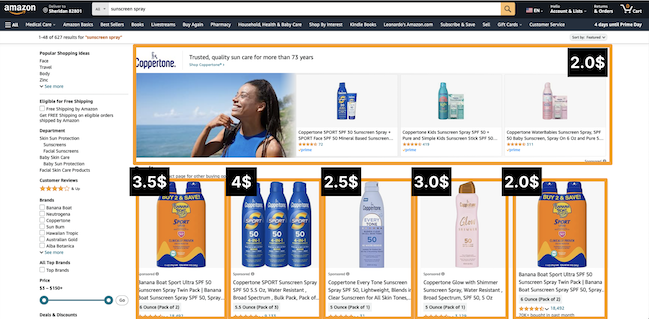
Ad rank = Bid ($) * probability of click

Using the Amazon Bid Calculator
Amazon provides a suggested bid range (minimum, average, and maximum) to guide sellers in the competitive landscape. The suggested bid gives you market information.
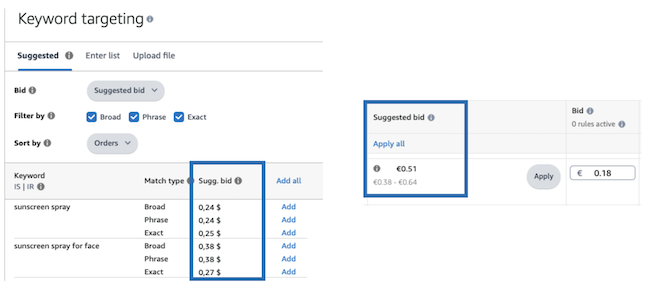
Amazon sees all the bids made by sellers on that keyword and generates impressions. It then orders and analyzes the bid concentration.
- The minimum bid indicates that a small fraction of the market (25%) offers up to that value.
- The central value separates the market into two: half of the sellers offer more than that amount, and the other half offer less.
- The suggested maximum bid is the minimum bid offered by the highest bidders. It’s not the maximum value because it’s a long tail, and we don’t know the highest value, only where it starts.

How to Adjust the Amazon Bid Formula
If you bid high, you’ll appear at the top of the search but spend more per click. (See the products in the red box.)
If you bid lower, you’ll appear lower, but you’ll save on cost. (See the products in the blue box.)
If you bid much less than the suggested minimum, your product might not appear in the sponsored results. (These products are not pictured).
Remember that bid amounts don’t impact organic results in the short term. So, if you bid low, you might appear lower in the sponsored results but higher in the organic results.
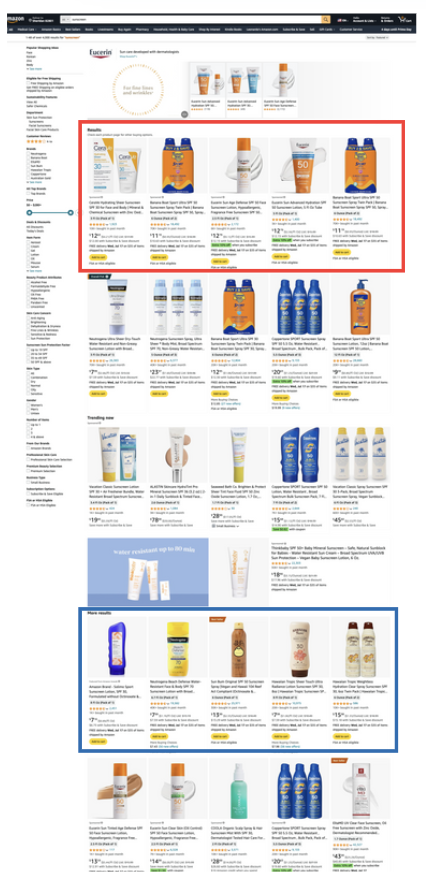
Bidding Strategies to Achieve Your Target ACoS
The bid per click is a key factor in managing your Amazon Advertising Cost of Sales (ACoS). The goal is to get the ACoS as close as possible to your target, optimizing for both cost efficiency and sales volume.

Let’s walk through an example to demonstrate the Amazon bidding strategy process.
Amazon Bidding Strategy Example:
In this example, you placed a bid of $0.80 for a keyword, but after the first few orders, your ACoS is 80%, which is too high, leading to losses.
You may be tempted to pause the campaign or mark the keyword as negative. However, since it generated a sale, the keyword is relevant. The issue lies in the high bid. What should you do next?

1. Reduce the Bid per Click
Let’s say you want to target an ACoS of 30%, reducing from your current ACos of 80%. To achieve this, you should reduce your bid per click by the same ratio you want to reduce the ACoS. Follow this formula.

By reducing the bid to $0.30, your ACoS may decrease, but this often leads to lower sales volume. Of course, this is not good.
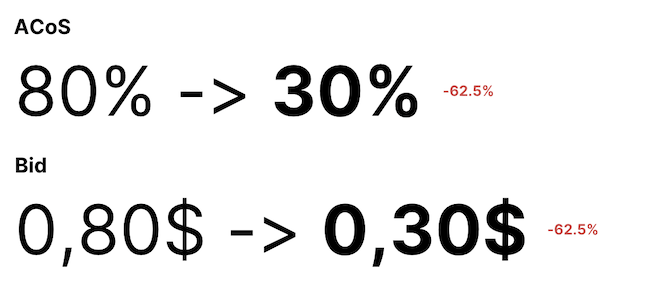
2. Increase the Bid to Balance Sales and ACoS
So you reduced the bid but your sales volume decreased. This means that your ad is not shown as often, or it takes longer to generate sales. In such cases, you may need to increase the bid to find a better balance between ACoS and sales volume.
If the ACoS drops too much, say from 80% to 12%, you may want to bring it back up to 30% for a better trade-off. To achieve this, you can increase your bids by the ratio of your target ACoS to your current ACoS.


Now, by increasing the bid to $0.75, you can achieve a better balance between ACoS and sales volume.
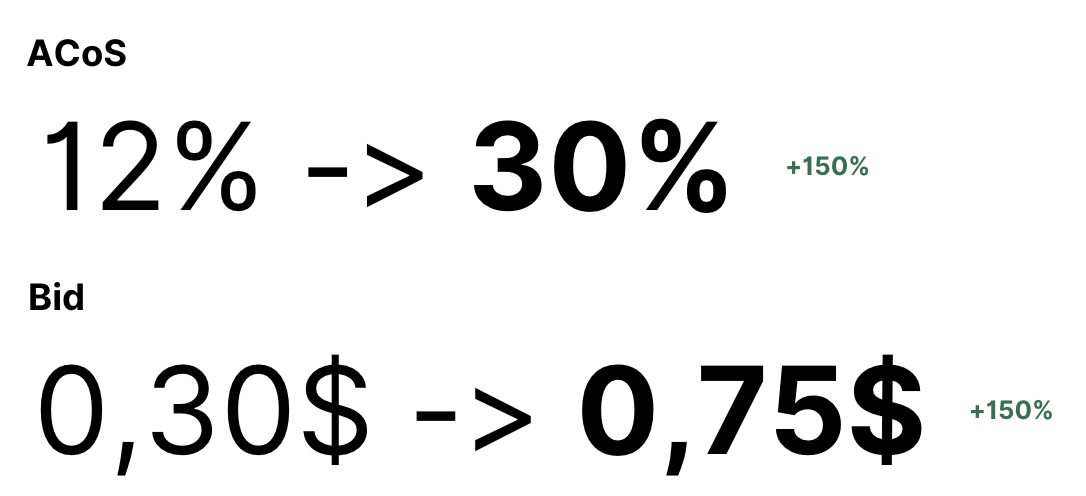
3. Automate the Process
Manual bid adjustments can be time-consuming and complicated. Tools like Advigator automate this process by analyzing historical data, adjusting bids, and optimizing campaigns to meet your target ACoS. Simply set your target, and the tool will manage bids and campaign updates.
By following this bidding strategy, you can consistently optimize your campaigns, keeping your ACoS in line with your goals while maintaining healthy sales volumes.
Now that you’ve mastered Amazon bidding, you’re ready to move on to bidding optimization strategies. Check out our bidding strategies optimization blog post
Launch optimized campaigns and leverage automation to keep them optimized over time. Easy to use for any Aamazon seller.
Get started